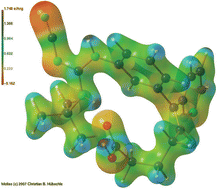The understanding of mutual recognition of biologically interacting systems on an atomic scale is of paramount importance in the life sciences. Electron density distributions that can be obtained from a high resolution X-ray diffraction experiment can provide—in addition to steric information—electronic properties of the species involved in these interactions. In recent years experimental ED methods have seen several favourable developments towards successful application in the life sciences. Experimental and methodological advances have made possible on the one hand high-speed X-ray diffraction experiments, and have allowed on the other hand the quantitative derivation of bonding, non-bonding and atomic electronic properties. This has made the investigation of a large number of molecules possible, and moreover, molecules with 200 or more atoms can be subject of experimental ED studies, as has been demonstrated by the example of vitamin B12. Supported by the experimentally verified transferability concept of submolecular electronic properties, a key issue in Bader's The Quantum Theory of Atoms in Molecules, activities have emerged to establish databases for the additive generation of electron densities of macromolecules from submolecular building blocks. It follows that the major aims of any experimental electron density work in the life sciences, namely the generation of electronic information for a series of molecules in a reasonable time and the study of biological macromolecules (proteins, polynucleotides), are within reach in the near future.

You have access to this article
 Please wait while we load your content...
Something went wrong. Try again?
Please wait while we load your content...
Something went wrong. Try again?


 Please wait while we load your content...
Please wait while we load your content...